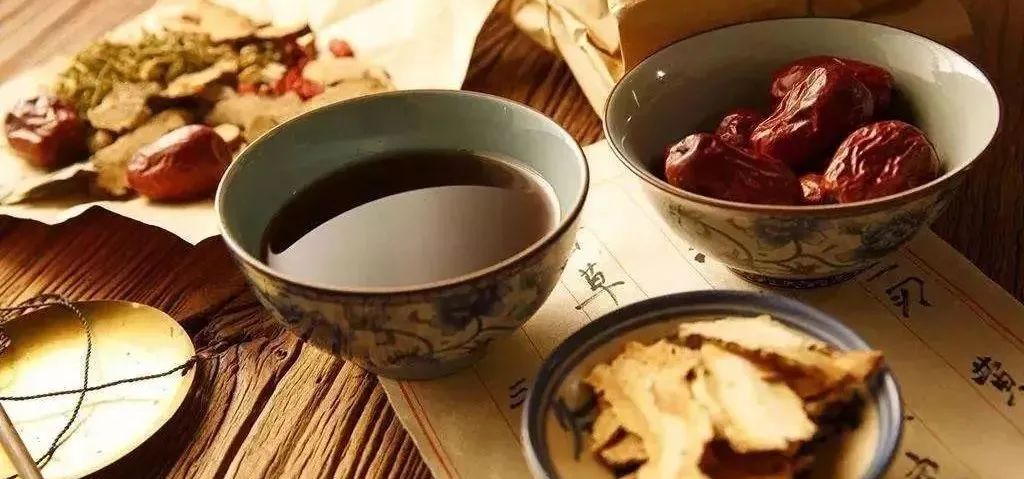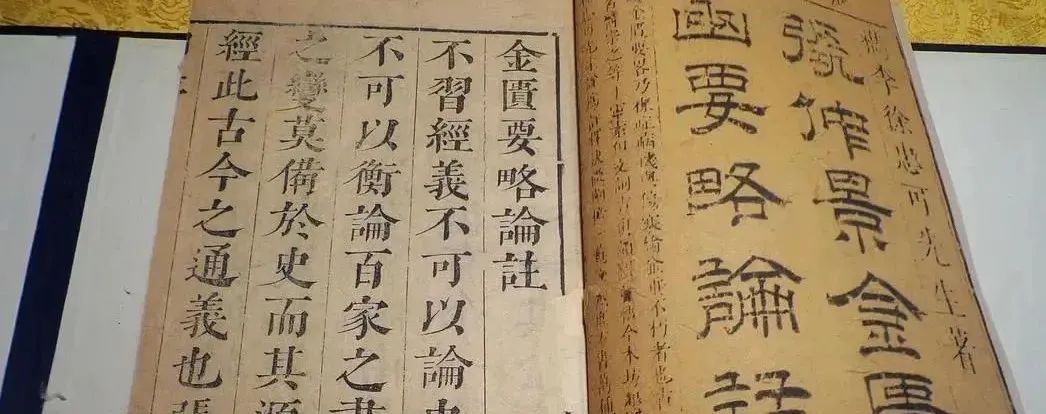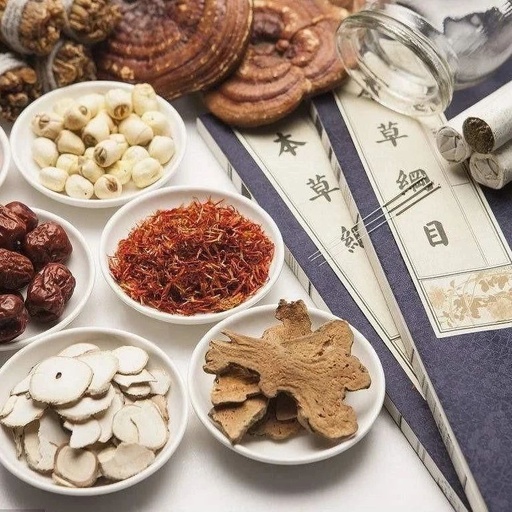
The Eight Principles refer to the eight categories of syndromes: Yin, Yang, Exterior, Interior, Cold, Heat, Deficiency, and Excess. The differentiation based on these Eight Principles is one of the most fundamental methods of diagnosis and treatment in Traditional Chinese Medicine (TCM). In the Qing Dynasty, Cheng Zhongling mentioned in “Medical Insights”: “The essence of disease lies in these eight characters: Cold, Heat, Deficiency, Excess, Exterior, Interior, Yin, and Yang. Since the condition of the disease does not go beyond this, the method of differentiation also does not go beyond this.” The imbalance of Yin and Yang leads to a state of Deficiency and Excess, while Cold and Heat are the most direct manifestations of this state. During clinical diagnosis, the inquiry about ‘Cold and Heat’ is always prioritized.
★
Definition of Cold and Heat
★
Cold and Heat have two layers of meaning: one refers to the symptoms of Cold and Heat, and the other refers to the pathogenesis of Cold and Heat. Firstly, regarding the symptoms of Cold and Heat: Cold refers to symptoms of weakness such as aversion to cold, cold limbs, poor spirit, spontaneous sweating, and diarrhea; Heat refers to symptoms of excess such as fever or subjective feeling of heat, aversion to heat, irritability, internal heat, dry stools, and foul breath. The “Huangdi Neijing” states: “When Yang prevails, there is Heat; when Yin prevails, there is Cold.” “Medical Insights” summarizes the specific manifestations of Cold and Heat as follows: “The Cold and Heat of the disease is entirely reflected in thirst and lack of thirst, whether thirst leads to urination or not, preference for hot or cold food, irritability and counterflow, the duration and color of urine, the consistency of stools, and the pulse being slow or rapid. If there is thirst and the ability to urinate, preference for cold food, irritability, short and red urine, and hard stools, this indicates Heat. If there is no thirst, or false thirst with inability to urinate, preference for hot soup, cold hands and feet, clear and long urine, loose stools, and a slow pulse, this indicates Cold.
Secondly, regarding the pathogenesis of Cold and Heat, the “Neijing” states: “Cold causes Qi to contract, Heat causes Qi to leak.” It also states: “Cold causes the pores to close, and Qi does not circulate, hence Qi contracts. Heat causes the pores to open, allowing the Wei and Ying Qi to communicate, leading to excessive sweating, hence Qi leaks.” Cold causes Qi to contract, while Heat causes Qi to leak; Cold causes the pores to close, preventing sweating and leading to a state of Excess; Heat causes the pores to open, leading to excessive sweating and a state of Deficiency. Here, Cold and Heat correspond to the concepts of ‘injury from Cold’ and ‘Wind’ frequently used in the “Shanghan Lun”. Cold represents contraction and Excess, while Heat or Wind represents dispersion and Deficiency, which differs from the common understanding that Cold is often Deficient and Heat is often Excessive. The “Shanghan Lun” and “Jinkui Yaolue” contain many examples utilizing the principles of Cold contraction and Heat dispersion. In cases where Cold and Heat are not clearly understood, it may seem counterintuitive. For example, after taking the Sanwu Baisan, it is noted: “Do not take hot porridge if there is excessive diarrhea; take cold porridge instead.” In the “Jinkui Yaolue”, it states: “If there is excessive diarrhea, drinking a cup of cold water will stabilize it.” This applies the principle of Cold contraction to treat diseases with excessive sweating and diarrhea. Similarly, after taking Guizhi Decoction, it is advised to “sip hot porridge to assist the medicinal effect”; after taking Wuling San, it is advised to “drink warm water to promote sweating and recovery”, utilizing the characteristics of Heat dispersion to treat symptoms such as lack of sweating, difficulty urinating, and overall Qi stagnation. In summary, for diseases with Qi stagnation, Heat helps to disperse, while Cold helps to consolidate in cases of excessive dispersion. Therefore, warming herbs like Ma Gui are used to disperse, while cooling herbs like Bai Hu are used to consolidate. The “Neijing” states: “Dispersing the exterior does not stray far from Heat, attacking the interior does not stray far from Cold.” I often encounter patients in the clinic who experience diarrhea the day after eating spicy food, which is due to the internal presence of Damp-Heat; the spiciness triggers the diarrhea, indicating that Heat leads to Qi leakage.
★
Transformation of Cold and Heat
★
The “Suwen: Water and Heat Acupoints” states: “The Emperor asked: Why does injury from Cold lead to Heat? Qi Bo replied: When Cold is excessive, it generates Heat.” The “Suwen: Heat Discussion” states: “All febrile diseases are related to Cold injuries.”
Heat leads to Qi leakage, and Qi leakage leads to Deficiency, hence the aversion to Cold. Cold leads to Qi contraction, and Qi contraction leads to Excess, hence the appearance of fever. Although it is called injury from Cold, the symptoms manifest as severe fever; the more severe the Cold exposure, the more intense the fever. Cold and Heat are not as opposed as ice and fire; rather, they transform into each other and are mutually causal. “When Cold is excessive, it generates Heat” may seem counterintuitive, hence later physicians interpreted it as “entering the interior to transform into Heat”. As long as one understands that “Cold causes Qi to contract, Heat causes Qi to leak”, it can be understood that Cold stagnation will inevitably generate Heat, and Heat is generally caused by Cold. This is why the “Suwen: Heat Discussion” states: “All febrile diseases are related to Cold injuries.” The discussion in the “Shanghan Lun” regarding the Taiyang Cold Injury syndrome, whether there is already fever or not, follows this principle: there is an external cause of Cold exposure, which then leads to exterior Heat appearing, and further development may lead to both exterior Cold and interior Heat, or both being Excessive, where the treatment method first uses Ma Huang Tang followed by the emergence of Da Qinglong Tang syndrome, Xiao Qinglong Jia Shigao Tang syndrome, and Xiao Chaihu Jia Shigao Tang syndrome. Although the summer-heat syndrome is Heat, it often presents with deficiency due to sweating; thus, clearing summer-heat formulas like Qing Shu Yi Qi Tang and Bai Hu Jia Ren Shen Tang often contain tonifying herbs, as stated in the “Neijing”: “When Qi is abundant, the body is Cold; when Qi is Deficient, the body is Hot due to summer-heat.” Liu Wansu in “Suwen Xuanji Yuan Bing Shi” analyzed the relationship between Cold and Heat occurrence, stating: “The classics say: ‘When a person is injured by Cold, it leads to disease and Heat.’ This is because Cold injures the skin and hair, causing the pores to close tightly, leading to stagnation of Yang Qi, which cannot circulate, resulting in Heat. Therefore, when there is exterior Heat from Cold injury, the Heat is at the exterior. It is advisable to use Ma Huang Tang or similar sweet, pungent, and warming herbs to disperse; to open the pores, allow sweating to release Heat, and thus recover. Any internal injury from Cold substances, or when Yin prevails over Yang, leading to disease and Cold; or when Cold and Heat clash, causing stagnation of Yang Qi in the stomach and intestines leading to Heat; or even internal injury from Cold substances leading to Heat, resulting in profuse sweating and cooling of the body, or mild symptoms that do not lead to other diseases, merely resulting in sourness in the stomach, commonly referred to as ‘vinegar heart’. The treatment should use warming herbs to disperse, similar to the meaning of resolving the exterior, to open the stagnation in the stomach and intestines, allowing the Heat to disperse and harmonize. If one has long enjoyed sourness and it does not cease, it is not advisable to warm it; rather, it should be treated with Cold herbs, followed by cooling herbs to remove the Heat and restore Qi balance. Therefore, sourness should not be consumed with sticky, greasy foods, as this can lead to stagnation of Yang Qi, causing blockage and lack of smoothness. For example, if food is left in a container, it becomes hot and sour. It is advisable to consume vegetables, which can promote the smooth flow of Qi.
From the above discussion, one can relate it to the first law of thermodynamics in physics, also known as the law of conservation of energy. It simply states that “energy cannot be created or destroyed; it can only change from one form to another or transfer from one object to another, while the total amount of energy remains constant.” Humans are warm-blooded animals with self-regulating mechanisms that always strive for energy stability. When excessive energy enters the body, it must find ways to expel it, striving for balance, such as through fever, sweating, and urination; there may also be symptoms like irritability and insomnia, which are ways to expel energy through activity and emotions; or symptoms like rashes and ulcers, which release energy through the skin; or through tears, nocturnal emissions, and menstrual flow to expel energy. Any energy that cannot be expelled temporarily transforms into fat stored in the body, leading to obesity. Excessive energy entering the body does not simply disappear; it can only be expelled from the body or presented in another form, which manifests as physiological expressions or pathological symptoms, often as the body’s negative feedback compensation mechanism attempting to restore energy balance. Therefore, pathological symptoms that appear in the body cannot simply be eliminated through direct opposition; rather, one must trace back to the source and clear the root cause. Internal Heat can lead to loose stools and frequent occurrences, as the body increases the frequency of bowel movements to reduce internal Heat; one cannot use astringent herbs to stop diarrhea for two reasons: first, this type of diarrhea is difficult to stop; second, as soon as the diarrhea slightly alleviates the internal Heat, it will seek another outlet, possibly presenting as sore throat, excessive sweating, irritability, etc. Therefore, this type of diarrhea should be treated with purgative and clearing herbs.
Cold and Heat are merely external manifestations of disease; the statement “Cold is Heat, and Heat is Cold” cannot be completely established in some cases, and accurate differentiation is still required. For example, Zhang Zhongjing’s pungent and warm herbs eliminate great Heat, Li Dongyuan’s sweet and warm herbs eliminate great Heat, or Liu Wansu’s pungent and cool, pungent and cold herbs relieve Heat, and Wang Taifu’s strong water and beneficial fire sources. The essence of disease lies in the Yin-Yang Deficiency and Excess; only by understanding the dynamics of Yin and Yang, without being misled by appearances, can one identify the source of the disease and apply accurate treatment. (Source: China Traditional Chinese Medicine News, Author: Zhen Weishuai, People’s Hospital of Lixia District, Jinan City, Shandong Province)

Recommended Reading

Classic Gynecology Course – Longjiang Han’s Gynecology and National Famous Old TCM Expert Professor Han Yanhua’s Academic Thoughts and Clinical Experience


Comparison of Yangming Class Formulas: San Chengqi Decoction


Three Formulas for Differentiating and Treating Wind in the “Jinkui Yaolue”



